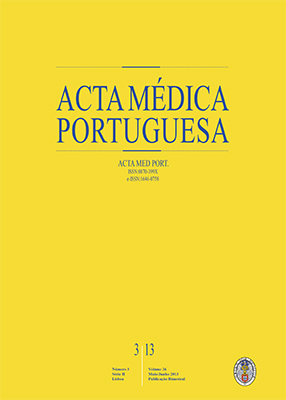Effects of Large Pressure Amplitude Low Frequency Noise in the Parotid Gland Perivasculo-Ductal Connective Tissue
DOI:
https://doi.org/10.20344/amp.4251Abstract
Introduction: In tissues and organs exposed to large pressure amplitude low frequency noise fibrosis occurs in the absence of inflammatory signs, which is thought to be a protective response. In the parotid gland the perivasculo-ductal connective tissue surrounds arteries, veins and the ductal tree. Perivasculo-ductal connective tissue is believed to function as a mechanical stabilizer of the glandular tissue.Material and Methods: In order to quantify the proliferation of perivasculo-ductal connective tissue in large pressure amplitude low frequency noise-exposed rats we used sixty Wistar rats which were equally divided into 6 groups. One group kept in silence, and the remaining five exposed to continuous large pressure amplitude low frequency noise: g1-168h (1 week); g2-504h (3 weeks); g3-840h (5 weeks); g4-1512h (9 weeks); and g5-2184h (13 weeks). After exposure, parotid glands were removed and the perivasculo-ductal connective tissue area was measured in all groups. We applied ANOVA statistical analysis, using SPSS 13.0.
Results: The global trend is an increase in the average perivasculo-ductal connective tissue areas, that develops linearly and significantly with large pressure amplitude low frequency noise exposure time (p < 0.001).
Discussion: It has been suggested that the biological response to large pressure amplitude low frequency noise exposure is associated with the need to maintain structural integrity. The structural reinforcement would be achieved by increased perivasculo-ductal connective tissue.
Conclusions: Hence, these results show that in response to large pressure amplitude low frequency noise exposure, rat parotid glands increase their perivasculo-ductal connective tissue.
Downloads
Downloads
Published
How to Cite
Issue
Section
License
All the articles published in the AMP are open access and comply with the requirements of funding agencies or academic institutions. The AMP is governed by the terms of the Creative Commons ‘Attribution – Non-Commercial Use - (CC-BY-NC)’ license, regarding the use by third parties.
It is the author’s responsibility to obtain approval for the reproduction of figures, tables, etc. from other publications.
Upon acceptance of an article for publication, the authors will be asked to complete the ICMJE “Copyright Liability and Copyright Sharing Statement “(http://www.actamedicaportuguesa.com/info/AMP-NormasPublicacao.pdf) and the “Declaration of Potential Conflicts of Interest” (http:// www.icmje.org/conflicts-of-interest). An e-mail will be sent to the corresponding author to acknowledge receipt of the manuscript.
After publication, the authors are authorised to make their articles available in repositories of their institutions of origin, as long as they always mention where they were published and according to the Creative Commons license.









